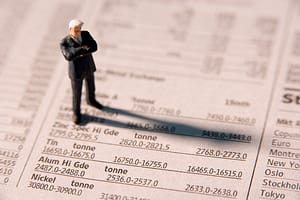The Office for National Statistics (ONS) has recently published a report on employee workplace pension trends across the UK. The publication looks at 2020 as well as provisional figures from 2021 to build a broad picture of the participation trends which have been at dangerously low levels in recent years, according to pension advisers.
The report found that the participation rate for UK workplace pension schemes was up from 78% in April 2020 to 79% in April 2021. This is only a modest rise, and the ONS believes this increase was partly attributed to the rise in public sector employment amid the Covid-19 pandemic response.
The public and private sector pensions gap is narrowing
One of the most encouraging figures to come out of the report was that the gap between public and private sector workplace pension take-up had narrowed as of April 2021. Public and private sector pension take-up is now at 91% and 75% respectively, with private-sector pension participation more than doubling from 32% in 2012. Of those with workplace pensions, approximately 20.8% were group personal, stakeholder or self-invested personal pensions (SIPPs).
The acid test will be for the UK government to encourage the self-employed community to follow suit and take out their own SIPPs to invest in their futures. The current cost-of-living crisis will surely make it even harder to convince a contingent of the self-employed to think of the long-term when everyday living costs are surging.
Nevertheless, the longer self-employed professionals wait to open their own SIPP, the less time their funds have to mature into a valuable nest egg for the future. SIPPs are tax efficient plans, giving individuals up to £40,000 in annual tax relief, with many SIPP providers capable of claiming back basic rate tax relief from HM Revenue and Customs (HMRC) on their clients’ behalf. Most providers are also willing to find old pensions and handle their transfer to one new overarching SIPP.
As of April 2021, those least likely to participate in a workplace pension were full-time employees in the private sector earning less than £199 per week. Almost half (43%) of these employees were not participating, although this could be based on the earnings criteria surrounding auto-enrolment, as well as the age eligibility criterion.
The industries where workplace pension scheme participation is at its lowest include the accommodation and food sectors (51%). However, it must also be noted that these sectors have experienced the biggest rise in workplace pension scheme participation from April 2012, with a 46% rise in the last nine years.
An overreliance on the state pension remains
Although a steady rise in the take-up of workplace pension plans is welcomed, fears remain that too many are seemingly reliant on their state pension. Joshua Gerstler, the chartered financial planner at The Orchard Practice, insists that “most of the UK population” will not be able to “enjoy their retirement on the state pension alone”. Gerstler describes the scenario as a “pensions time bomb”, with even those committing to statutory minimum contributions unlikely to be enough to “diffuse it”.






Leave a Comment